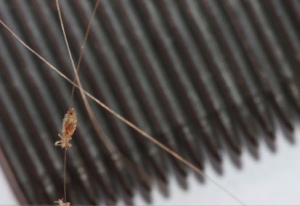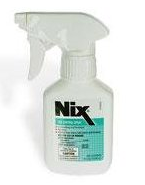Did you know the word lice is plural for louse? I guess that little factoid is great for a trivia game but it hardly helps when you find a louse or lice on you or your child. Having lice is a common occurrence and we get panicked calls from mothers, commercial establishments and schools or day cares quite often wanting treatment. Our response is almost always met with disbelief and an insistence on service if for no other reason, it makes the person at least feel better. One other fact is that there are really only three louses that regularly cause problems for humans but the head louse is the most common so we tacle just this one for now. Hopefully with this article you can rest easier and find out how you can quickly take care of these problems on your own.
It is often thought that only unclean or poorer people get head lice and this simply is not true. Anybody can get this parasite especially those who are in large groups of people. Schools often have outbreaks and have ongoing programs to check for the lice and control the spread. Head lice CAN be transmitted via close contact or a shared hat, comb, towel or hair brush and kids are famous for trading these thing back and forth. By the way, lice actually prefer clean hair as opposed to dirty.
Spraying or fogging IS necessary to kill the lice or they will infest your entire home. While head lice can live for about 2 days off the scalp the chances of them re-infesting your head again are pretty remote. While sprays might kill some it is best to simply launder clothes, hats or towels in 125 degree water for about 10 minutes and that will kill all the stages of the louse.
Long hair increases your chances for head lice is another myth that goes around but the truth is you have just as much chance as with short.
chance as with short.
Head lice can feed off fallen hair that is on the ground to survive. While it is true that head lice can be found on or near fallen hair they do not feed on it. Head lice eat blood from their tiny bites they produce in the scalp. Eggs also called ‘nits’ may be attached to the fallen hair but it’s unlikely they’ll hatch away from the warmth of the scalp and they need a blood meal within the first hour after hatching or else they will die.
Pets can be infested with head lice. Head lice are exclusively a parasite of the human head and while it is true they can fall or crawl onto a pets body if say the kids are playing and in close contact, they cannot survive and will die unless they can find a human head on which to feed.
Hair spray kills head lice. I think this came about from reports of hair spray globules resembling the nits (eggs) but hair spray is ineffective and not safe to use for this purpose.
Head lice transmit disease. Nope, head lice are not vectors of any disease to humans.
How to treat head lice
 Treating head lice consists mainly of isolating the person for a few days until the problem is solved. Not in a locked room or anything just no close contact and don’t allow for sharing of combs, hats etc. Sheets, pillow cases and clothes should be washed in hot water with detergent. (or dry cleaned but you should alert the cleaner) Temperature needs to be 125 degrees or more and the items need at least 10 minutes in this hot water. For areas like couches or chairs you could treat them with a product like ‘Nix’ or ‘Rid’ sprays. You could just stay off of them for a couple of days and the lice will be dead anyway.
Treating head lice consists mainly of isolating the person for a few days until the problem is solved. Not in a locked room or anything just no close contact and don’t allow for sharing of combs, hats etc. Sheets, pillow cases and clothes should be washed in hot water with detergent. (or dry cleaned but you should alert the cleaner) Temperature needs to be 125 degrees or more and the items need at least 10 minutes in this hot water. For areas like couches or chairs you could treat them with a product like ‘Nix’ or ‘Rid’ sprays. You could just stay off of them for a couple of days and the lice will be dead anyway.
For the person, use shampoos that are specifically made for lice control. The eggs are cemented to the hair and will not come off with regular shampoo. Special combs are available that can remove the eggs and make sure to launder any towel used in this process as well as clothing and vacuum the area as well.
Finally, try not to panic when head lice are discovered, I”m sure it’s embarrassing for you but it happens to millions of people every year and with these simple procedures it will be a thing of the past rather quickly.




